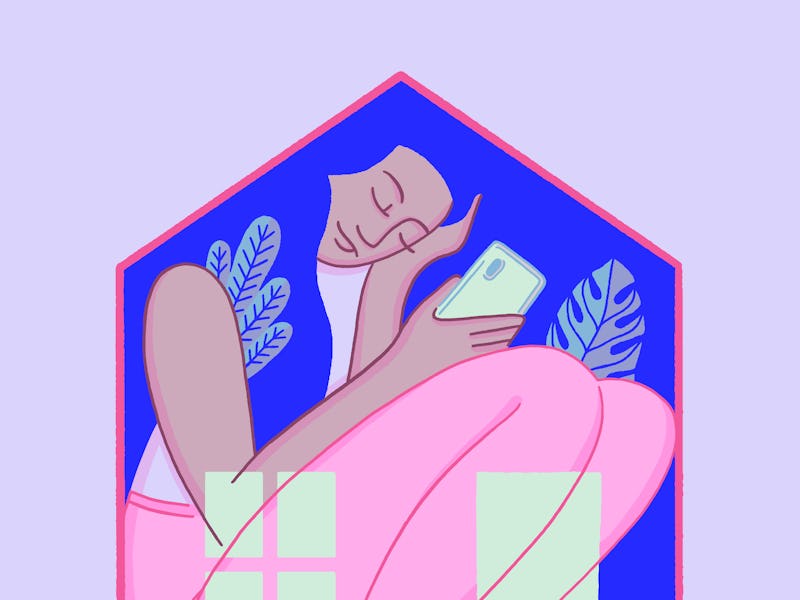Covid-19 offers workplaces and schools a chance to rethink accepted norms
A surprising reaction linked to Covid-19 presents a compelling opportunity.

A recent evaluation of teenagers living in South West England produced a counterintuitive finding. A sample of 13 to 14-year-olds was, overall, less anxious in May of this year than they were last October. Despite the pandemic, there was an increase in well-being and an in feeling connected to school — even though the school they were attending was virtual.
Emily Widnall is a senior research associate in Population Health Sciences at the University of Bristol’s Medical School and a co-author of the report detailing these findings. She tells me that this study was part of a larger project exploring how adolescents use social media and its impact on mental health and well-being. After the pandemic struck, schools closed, and cities went into lockdown, “it became really important to understand how young people had been affected by these changes.”
“The study provided a unique insight into how many young teenagers feel without the day-to-day pressures of school life,” Widnall says.
At first, Widnall and her colleagues were surprised by the results, realizing that their findings were not in line with many pandemic-related fears. The positives of Covid-19 appear to be few and far between. Overall, mental health has taken a huge hit, especially among vulnerable families. Issues like illness, unemployment, and the burden of caretaking are now common.
And yet, here were young people who experienced less anxiety well into the pandemic compared to last fall. The question now is why — the survey did not specifically ask what made the students feel less anxious. The team hypothesizes it may be because students can avoid school as a stressful environment, as well as challenging peer relationships. The study found that those with the lowest levels of well-being pre-pandemic saw the biggest gains in May, especially among those who felt the least connected to school.
But only further research can truly answer why. It’s a question that the team plans on pursuing next. For now, they’ve been hearing that their results might not be as strange as they initially appear.
“It has been reassuring to hear from lots of people within schools since the report launched that these findings absolutely make sense,” Widnall says.
“It will be really interesting to learn if there are any parallels between student and adult experiences,” she adds. “I think lockdown has allowed a lot of people to take a breath and perhaps a slower pace of life, be that away from school pressures or pressures at work.”
Preliminary evidence does indicate those parallels may indeed exist. In a Gallup poll of 2,276 employed US adults released in April, 66 percent reported working from home during the pandemic. Of this group, 59 percent reported they would prefer to do their jobs from home as much as possible after the pandemic is over.
Meanwhile, a representative survey of Australian adults at the end of March found that two-thirds of the respondents felt Covid-19 restrictions benefited them in at least one positive way. Anecdotal reports indicate some people link returning to workplaces with feelings of sadness and anxiety.
Julie McCarthy is a professor of Organizational Behavior and HR Management at the University of Toronto Scarborough. There’s likely a wide variety of reasons why a certain slice of the population feels less anxious with this arrangement, she tells me. One example she gives is the elimination of the commute. With up to two hours cut from commuting, people can use that time to do things they actually enjoy, like spending time with family, exercising, and rejuvenating.
“Working from home also offers higher levels of flexibility in terms of how you schedule your work and personal time,” McCarthy says. “A primary driver of anxiety is a loss of control, so having more control over your scheduling can help reduce anxiety.”
Widnall’s work also suggests the lockdown provided an opportunity for schools to find new ways to connect with students and, in turn, students were responding positively to virtual school. Teachers, she said, have found “new ways to engage with students to nurture connectedness.”
The pandemic offers a similar chance for workplaces. McCarthy says now is the time for workplaces to take a careful look at how they are operating and evaluate what they can do to improve the well-being of workers.
“It’s a great opportunity to think about how we schedule the workday and whether different schedules — more flexible schedules or more hybrid in-person, remote schedules — would be valuable for various workgroups,” McCarthy says.
This is all against the backdrop of many others still feeling acute anxiety because of the social and economic threats imposed by the pandemic. Ultimately, a common thread here is control — how much one feels certain about the world around them and how much they can do to preserve that.
It’s critical for everyone, McCarthy says, to maintain some control by focusing on healthy habits and a positive outlook. From there, it’s essential to live in the moment, foster personal relationships, and, perhaps, pinpoint what anxieties are not acceptable and create a plan for change.
This article was originally published on